Art Fairs
‘It’s Exciting for People to Have That ‘Wow’ Moment’: Collectors Snap Up Major Works by Dana Schutz and George Condo at Frieze New York
Dealers managed to do strong business on opening day at the pared-down Frieze New York.
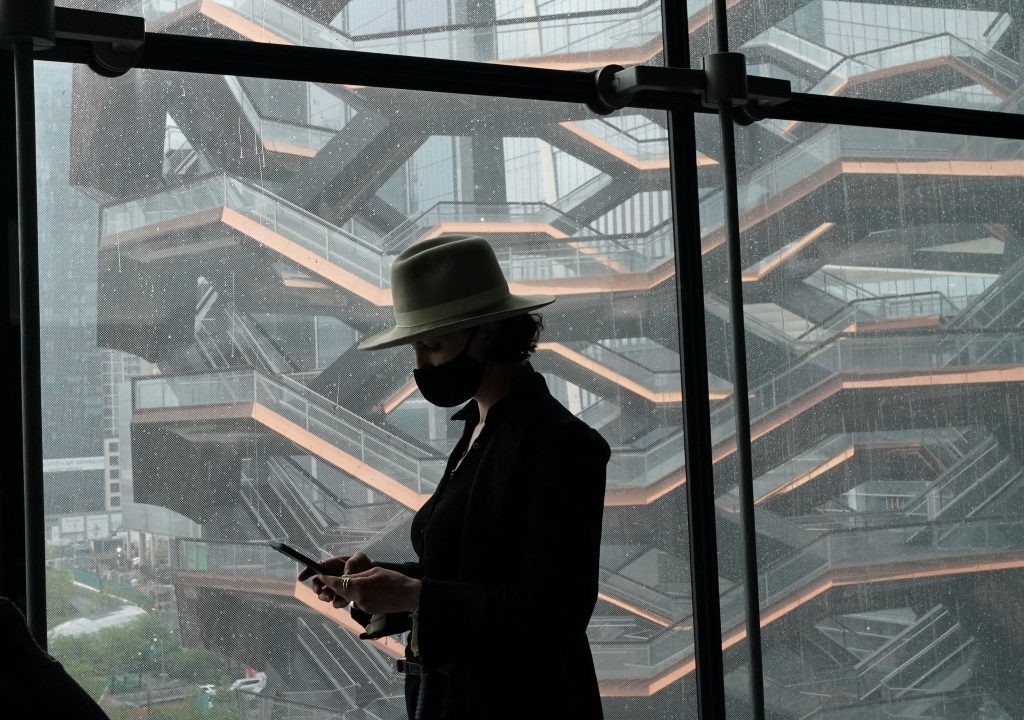
Dealers managed to do strong business on opening day at the pared-down Frieze New York.

Nate Freeman &
Eileen Kinsella

This is not a drill—not-online, not-remote, fully inside, honest-to-god art fairs are back.
After 14 months of staring at images of paintings in digitally rendered booths, art-world VIPs lined up Wednesday morning at the Shed in Manhattan’s Hudson Yards district to enter Frieze New York.
This was by no means a foregone conclusion. Frieze, owned by the recently IPOed Endeavor, came close to scrapping its 2021 edition. (Plans for a scaled-back Los Angeles edition were indeed cancelled.) But thanks to rigorous safety protocols that prevent anyone from entering without proof of vaccine or a negative test—not to mention a head-scratching requirement for shipped works to be isolated for three days—the fair did indeed go off, with everyone wearing masks of course.
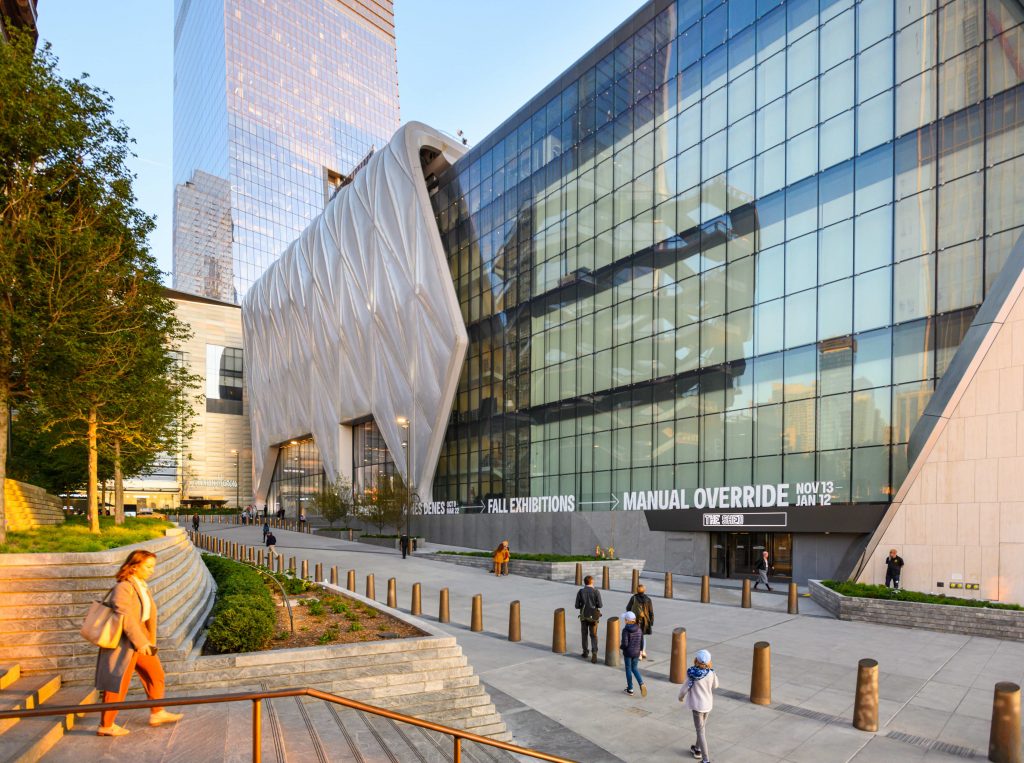
The Shed, a cultural center in Hudson Yards. (C. Taylor Crothers/Getty Images)
So that takes care of the safety concerns—but what about the concern that the lack of travel would turn the whole thing into the equivalent of a locals-only gallery walk? Not the case—art advisors and curators flew in from around the country. Collectors, too: Howard and Cindy Rachofsky from Dallas, Don and Mera Rubell from Miami, and Mike Bloomberg from, well, the Upper East Side.
“It’s not just New York—America is present,” Hauser & Wirth president Marc Payot said. “Yesterday I was at the gallery, and I had my first meeting at 8:00 in the morning and finished at 8:00 at night, and it was people from Dallas, from San Francisco, from all over.”
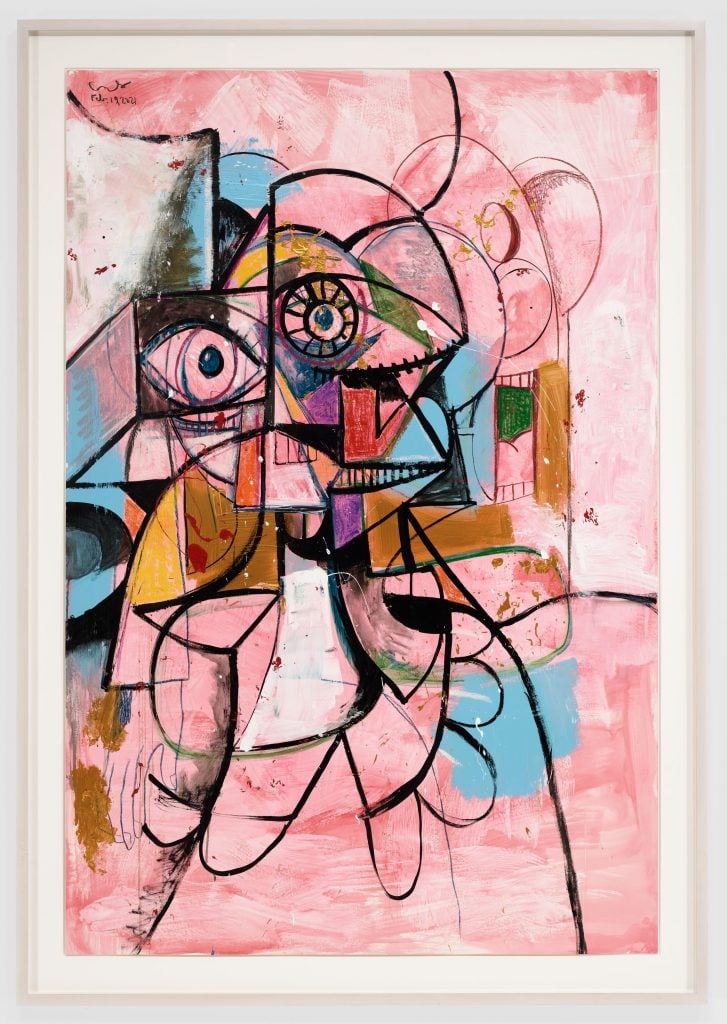
George Condo, The Drifter (2021). Photo courtesy the artist and Hauser & Wirth. Photo by Thomas Barratt.
Payot was standing in the Hauser’s booth—again, a real, physical art fair booth!—near a large work by Cindy Sherman, who recently joined the mega-gallery after her longtime home, Metro Pictures, announced it would close at the end of the year. Suddenly, a large phalanx of VIPs came toward us.
“Maybe it just shows these are all addicts, right?” Payot said. “They need culture.”
It being New York, the capital of the American art world, Payot said the Swiss-born gallery focused on its American artists. Among the works that sold in the opening hours were Louise Bourgeois’s Blind Man’s Buff (1984) for around $1 million; George Condo’s The Drifter, just completed in February, for $800,000; and Rashid Johnson’s Bruise Painting “Blue Bird” (2021) for $750,000. A small Simone Leigh, who joined the gallery just before the pandemic and will rep the U.S. at the pushed-back Venice Biennale next year, sold for $300,000.
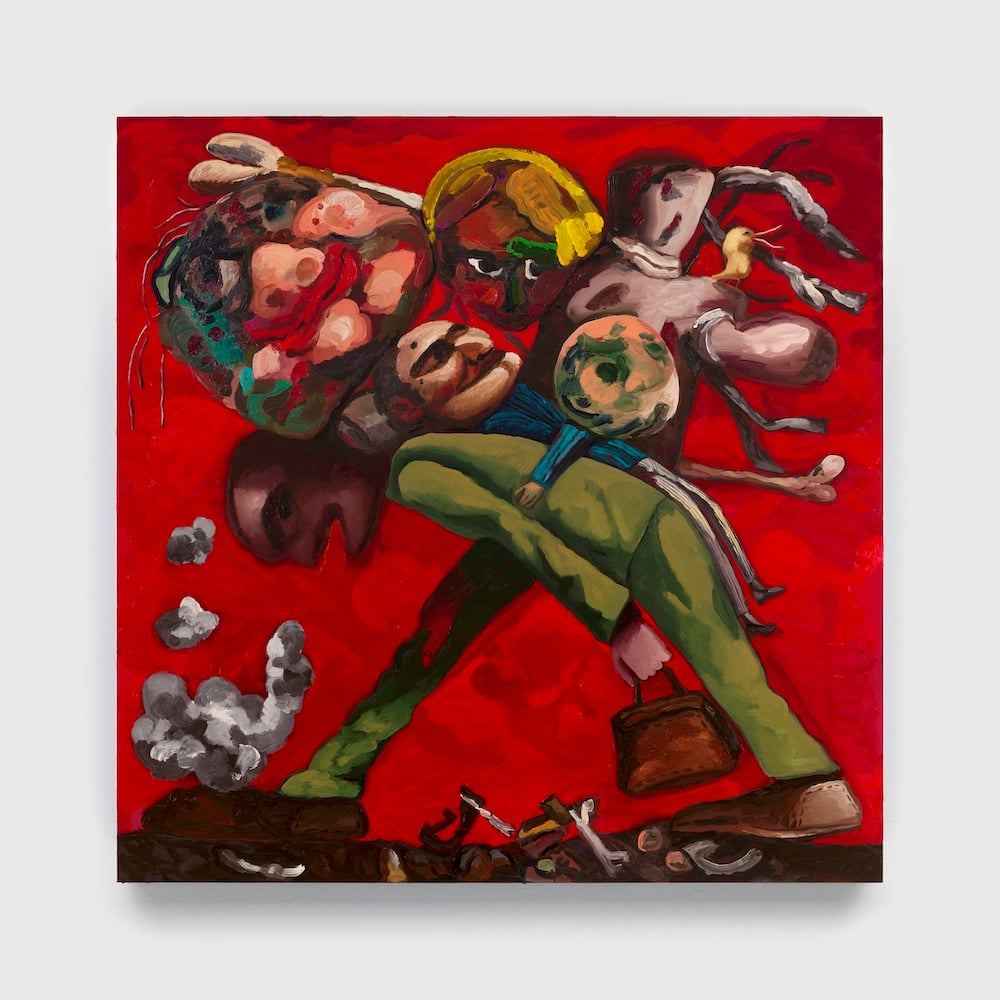
Dana Schutz, Baggage (2021) ©Dana Schutz. Image courtesy the artist and David Zwirner.
It’s clear inventory was moving—but whether things were actually selling in the building was another question entirely. Several galleries reported that they had sold out their booths before the opening bell (sources said David Zwirner placed the five miraculous paintings by Dana Schutz, priced between $500,000 and $1 million, in advance) and were there mostly to catch up with old friends and clients.
Payot played coy when asked about pre-sales versus booth sales—”We had some action here at the fair,” he said—but David Maupin, partner at Lehmann Maupin, insisted that commerce was happening live. All three works by young gun Dominic Chambers sold in the opening hour to American and Canadian collectors for prices ranging from $35,000 to $40,000, according to the gallery.
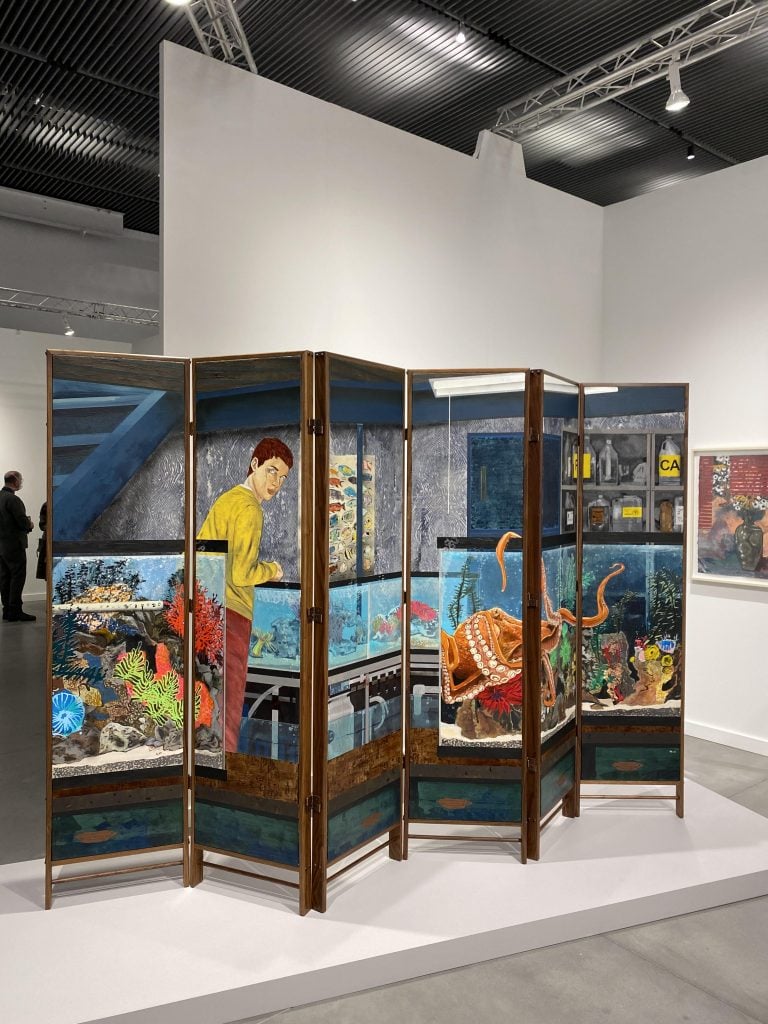
Hernan Bas, The Suspect (2021) at the Lehmann Maupin booth. Photo by Nate Freeman.
The big sale of the day for Maupin, though, was a gigantic six-panel folding screen by Hernan Bas, The Suspect (2021), picked up by a blue-chip European collector for between $350,000 and $400,000.
“People came from all over the country—actually, some people came from abroad, there was a woman who came from Jakarta,” said Maupin, standing in front of a masterful pandemic-era work by Gilbert & George. “People are just excited to see real art in person, and it’s very manageable. It’s not too crowded. And everyone’s taking the requirements very seriously.”
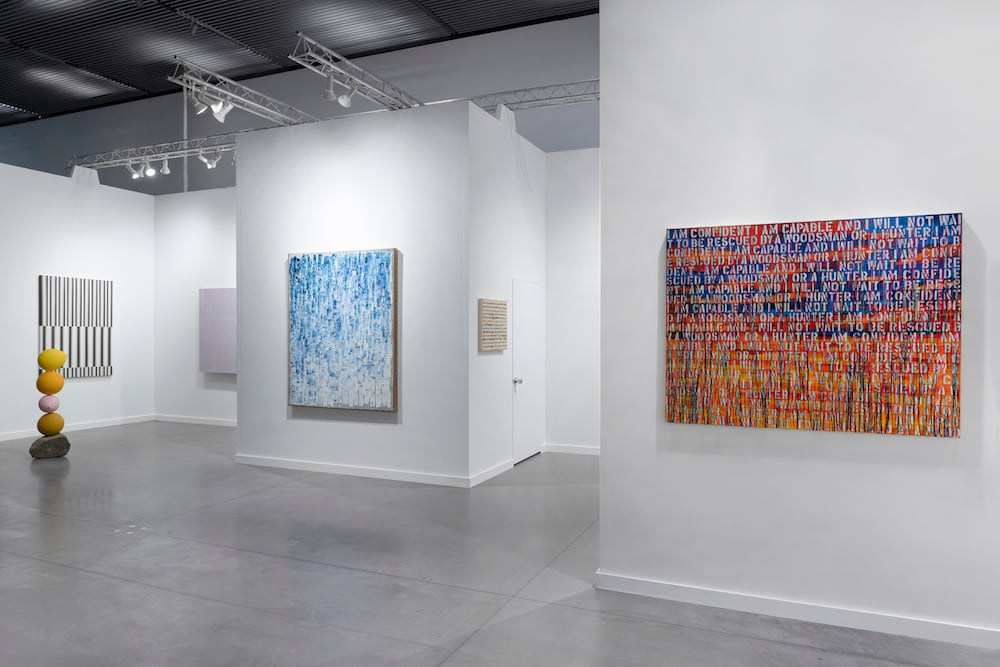
Installation view of Tina Kim Gallery at Frieze New York. Image courtesy Tina Kim Gallery.
While a full third of the initial 66-exhibitor list opted out of physically attending due largely to travel restrictions and health concerns, some international galleries made the trek.
Massimo de Carlo came from Europe with work by Sanford Biggers, Piotr Uklanski, and Jessie Homer French, while London’s Stephen Friedman brought a solo booth of work by Sarah Ball, priced between £15,000 and £35,000 ($20,000 to $48,000).
Berlin gallery Esther Schipper didn’t come to the fair with a solo booth but instead shared one with Mitchell-Innes & Nash for a presentation of work by General Idea. (That arrangement was not entirely borne from lack of travel, partner Courtney Willis Blair explained, as they teamed up pre-pandemic, too.)
In general, Courtney Willis Blair said the fair had a slightly different feel than those in the past given the ultra strict capacity restrictions and timed entry. “There used to be that bum rush at the beginning, and this year people trickled in,” she said. “But then you see the collectors who flew in, and it feels really good.”
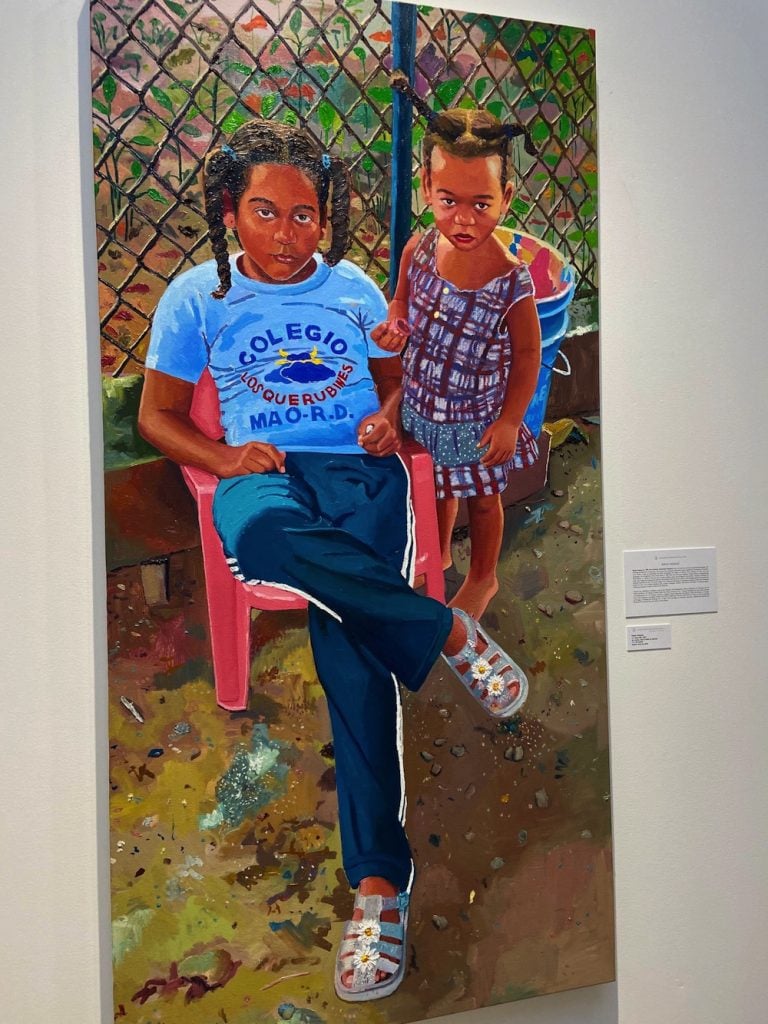
Raelis Vasquez, La Tierra Mia (2021) at Jenkins Johnson Gallery booth at Frieze.
Photo Eileen Kinsella
Works priced in the mid-five figures and even six figures were moving swiftly. Galeria Nara Roesler, which has locations in New York, Rio de Janeiro, and São Paulo, nearly sold out of its abstraction and figuration-fusing paintings by Cristina Canale for prices ranging from $17,000 to $53,000.
“There is a great sense of relief and happiness to socialize with clients and friends again,” said the gallery’s Daniel Roesler, noting he saw collectors in town from as far as Brazil and Europe.
Tina Kim sold two paintings by Dansaekhwa artist Ha Chong-Hyun in the range of $200,000 to $300,000 as well as an intricate embroidery and text work by Ghada Amer for $45,000. The artist will show a new series of sculptures at the gallery next year—a body of work facilitated by the dealer’s own quarantine in Korea. While there, Kim worked to help facilitate the series’ production with a local fabricator.
“See what happens?” Kim said. “You get to work more closely with the artists in a time like this.”
That’s not to say it was all resolute optimism. Karyn Behnke, director of Jenkins Johnson Projects, conceded that the lead-up to the fair was nerve-wracking as protocols changed on a daily basis. But she praised Frieze organizers for their thoroughness and flexibility.
“The last year, as we all know, has been so digitally focused,” Behnke said. “It’s exciting for people to be able to have that ‘wow’ moment when encountering the work, and to be able to look at it, at their own pace.”
Still, it wouldn’t be a year starting in 202 without an online viewing room. Nicelle Beauchene brought work by Ruby Sky Stiler and Jennifer Paige Cohen to the fair, but mentioned that she was also selling through Frieze’s concurrent online portal.
“We came with not that much to sell in the booth, but I see that sales are popping off in the viewing room,” Beauchene said. “I think it’s a FOMO thing—not everyone could get into the fair on the first day.”
A highlight of these first few hours inside an art fair in so long were the true “nature is healing” moments. Bill Powers was in the Half Gallery booth—sold out, with works by Emma Stern and Jan Gatewood, not to mention a study by Anna Weyant for a work on view right now at the FLAG Art Foundation—when Powers spotted Peter Schjeldahl, The New Yorker critic who reveled to the world in late 2019 he was dying of cancer.
Thankfully, he’s still here, walking around a fair and jotting down notes. Downstairs, the 93-year-old Marian Goodman looked positively sprightly as she worked her booth, a solo presentation of work by Annette Messager. And even Aggie Gund, the grande dame of arts philanthropy, was seen being wheeled around in the fair’s opening moments.
But one sign that the art world has been changed drastically by the pandemic was the fact that the biggest celebrity artist present was Mike Winkelmann, the middle-aged white guy who goes by Beeple and became famous overnight when his NFT collage Everydays: The First 5000 Days sold at Christie’s for $69 million.
Nobody said reentry to society was going to be easy.